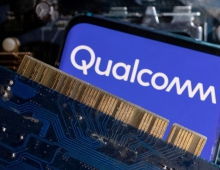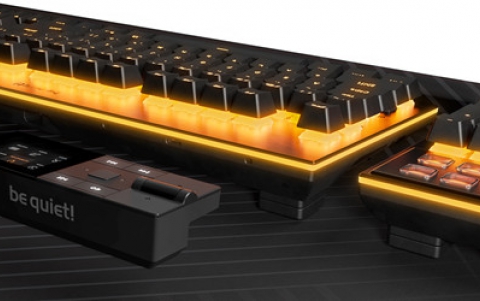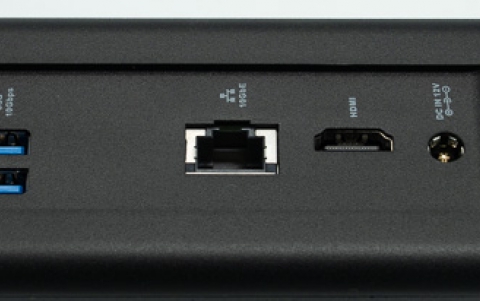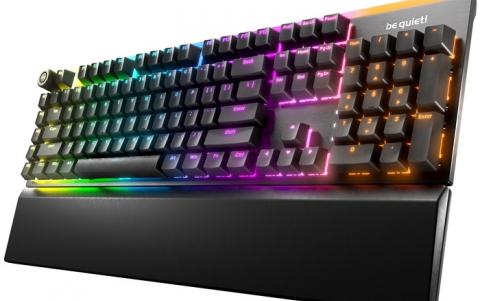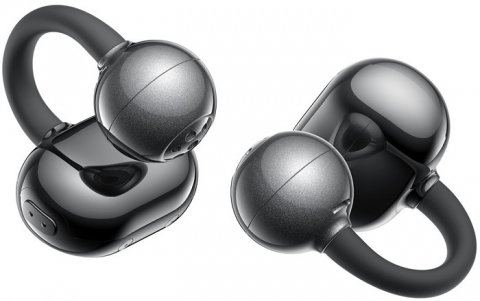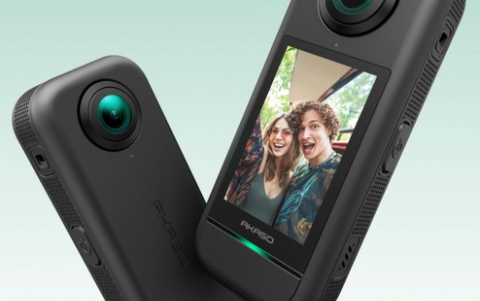
Qualcomm Previews The Next-Generation of Snapdragon Processor At MWC 2015
Qualcomm will preview a series of next-generation mobile experiences at MWC 2015 through the power of the Qualcomm Zeroth platform, Qualcomm Technologies' first cognitive computing platform.
The Zeroth platform will be optimized for premium mobile devices based on the Qualcomm Snapdragon 820 processor.
Qualcomm said that the Snapdragon 820 processor has been "designed on a leading edge FinFET process node," and that it will introduce Qualcomm Technologies' custom 64-bit CPU architecture designed for premium mobile devices, the Qualcomm Kryo CPU.
The Snapdragon 820 processor is expected to begin sampling in the second half of 2015.
The Zeroth platform is composed of new hardware and software technologies that benefit from Qualcomm Technologies' heterogeneous processing and connectivity within a highly integrated SoC. On-device intelligence has been designed for a range of key mobile experiences and cognitive capabilities including:
- Visual Perception - Devices that can take higher quality photos and videos and make searching your content easier, enabled by computer vision, on-device deep learning and smart cameras that can recognize scenes, objects, and read text and handwriting.
- Intelligent Connectivity - Devices that can provide the fastest connectivity through autonomous optimization and service across the latest and most advanced LTE, Wi-Fi and Bluetooth technologies.
- Security - Devices that can be more secure by using advanced behavioral analysis to detect and protect against new malware and provide more advanced user authentication.
- Always-on awareness - Devices that can anticipate user needs by always being aware of their surroundings through an integrated always-on sensor engine, sensor fusion and machine learning and classification algorithms.
- Multimedia - More immersive audio and visual user experiences, such as dynamic audio that can adapt surround sound based on head movement and facial recognition.
- Speech and audio recognition - Devices that can learn and take instant actions by recognizing environmental sounds, music and speech through always-on listening, sound localization, sound identification and natural language processing.
- Natural device interactions - Devices that can personalize and adapt interactions by recognizing gestures, expressions, and faces.
Next Generation Biometrics Solution
Qualcomm is also launching the Qualcomm Snapdragon Sense ID 3D Fingerprint Technology, the first 3D fingerprint authentication technology based on ultrasonic technology.
The offering is designed to provide enhanced authentication capabilities, usability and integration over legacy capacitive touch-based fingerprint technologies by utilizing technology developed for government-grade biometric solutions. This new authentication platform utilizes Qualcomm SecureMSM technology and the FIDO (Fast IDentity Online) Alliance Universal Authentication Framework (UAF) specification to provide password-less authentication. This new standard for mobile device authentication and browser plug-ins is designed to allow any website or cloud application that offers FIDO authentication to interface with a broad variety of existing and future FIDO devices.
QTI's ultrasonic fingerprint technology has a number of advantages over capacitive touch-based fingerprint technologies, including the ability to scan through a smartphone cover that is made of glass, aluminum, stainless steel, sapphire and plastics.
The user experience is also improved by being able to scan through various contaminants that might be present on the finger, such as sweat, hand lotion and condensation, providing a more consistent and accurate method of authentication. Additionally, QTI's ultrasonic-based solution uses sound waves to directly penetrate the outer layers of skin, detecting three-dimensional details and unique fingerprint characteristics, including fingerprint ridges and sweat pores that are not possible to detect with current capacitive touch-based fingerprint technologies. The result is a highly detailed surface map of the fingerprint which is difficult to imitate or spoof.
QTI's Snapdragon Sense ID 3D Fingerprint Technology consists of a Qualcomm biometric integrated circuit (QBIC), custom sensor technology, and algorithms managed by SecureMSM technology. This technology is being introduced in conjunction with the Snapdragon 810 and Snapdragon 425 processors. Snapdragon Sense ID 3D fingerprint technology is designed to be compatible with all Snapdragon 400 series, 600 series and 800 series processors.
Qualcomm Snapdragon Sense ID 3D Fingerprint Technology is expected to be available in commercial devices later this year.
New LTE modems for cars
Cars using Qualcomm's new LTE technology should be on the market within a few years' time.
Qualcomm's new Snapdragon X12 and X5 modems are designed to be embedded in cars and work with owners' mobile devices to access a variety of Internet services, from streaming music to vehicle diagnostics.
"These modems will give carmakers and consumers an in-car experience that rivals the best smartphones," said Kanwalinder Singh, senior vice president of business development for Qualcomm Technologies. "Consumer expectations of the experience inside the car are being driven by their experiences with their smartphones."
Singh said the new modems are faster and will support advanced telematics and infotainment systems being developed for cars that could hit the market in the next two to three years.
The technology means, among other things, that dealerships can alert customers to when service is needed or if a part needs repair. In some cases, software can be upgraded over the air while the vehicle is parked overnight in a garage.
The Next Leap in LTE-Advanced
Qualcomm is also delivering at MWC 2015 a public demonstration of Category 11 LTE-Advanced (LTE-A) Carrier Aggregation (CA) connectivity. Utilizing LTE Category 11 three-channel 60MHz CA and 256 Quadrature Amplitude Modulation (QAM), and infrastructure provided by Ericsson, QTI will showcase download speeds of up to 600 Mbps.
Showcasing the ability to enable Category 9 LTE-A CA download speeds of up to 450Mbps, QTI will also feature: the first LTE-FDD demonstration with a commercial smartphone, utilizing LG's newly released LG G Flex 2 featuring a Qualcomm Snapdragon 810 processor with X10 LTE and infrastructure provided by Ericsson; an LTE-FDD demonstration in collaboration with Telstra, NETGEAR and Ericsson, featuring the newly announced NETGEAR AirCard LTE Category 9 mobile hotspot based on the Snapdragon X12 LTE modem and QCA6174 2-stream 802.11ac Wi-Fi chipset; and a TD-LTE Advanced Downlink three-way CA demonstration in cooperation with China Mobile Communications Corporation (CMCC) and ZTE to showcase 3X more throughput and an enhanced network performance. Additionally, QTI will also be supporting demonstrations for LTE TDD-FDD 2x CA at Ericsson and Nokia booths.
Combining next-generation LTE-A technology with its multimode capabilities, a demonstration for Category 6 Dual SIM connectivity will also be featured, showcasing how mobile users can take advantage of speeds up to 300Mbps in mobile devices without compromising the benefits of Dual SIM use in many countries around the world.
QTI is also teaming up with Facebook and Ericsson to demonstrate the ability to efficiently push application updates simultaneously to many mobile devices via LTE-Broadcast.
Using this technology, application vendors and app store owners can push application updates to user devices, which offers background file delivery of services and reduces download time and improves network efficiency.
QTI is also making strides in converging LTE and Wi-Fi. Using QTI's IP Multimedia Services (IMS) client, QTI is teaming with Ericsson to demonstrate LTE/Wi-Fi Call Continuity, which is designed to support seamless transfers of voice and video calls between LTE and Wi-Fi without the hassle of dropping the call. The IMS client gives mobile operators the ability to offload voice and/or video calls to Wi-Fi as a way to optimize network usage and extend LTE calling coverage. With Call Continuity, operators can now offer new bandwidth-intensive video calling services, while offloading some of the added traffic to Wi-Fi networks at the same time.
Through efforts made by QTI, Networks Business of Samsung Electronics, Alcatel-Lucent and KT, LTE/Wi-Fi Link Aggregation will be demonstrated publicly for the first time. Until now, operator Wi-Fi has existed independently of the operator's LTE network. This technology will bring operator Wi-Fi access points under the direct real-time control of the LTE radio network without the need for modifications. As a result, it will give operators the opportunity to tap into the capacity of the Wi-Fi access points they own or control, by aggregating LTE and Wi-Fi radio links together in the mobile device. Doing so provides users with faster throughput and direct access to operator services in more places, and it offers operators unprecedented levels of control, mobility and offload that are not possible when carrier Wi-Fi access points are kept separate and unconnected to LTE.
To showcase the co-existence of LTE-A and Wi-Fi, QTI will conduct live demonstrations of LTE in an unlicensed spectrum (LTE-U). Extending LTE-A to unlicensed spectrum in a way that coexists with Wi-Fi allows operators to utilize available unlicensed spectrum effectively. The demonstration will show LTE-U in multiple 5GHz channels. Additionally, QTI recently announced the integration of LTE-U into its FSM99xx small cells product portfolio, along with the WTR3950, the first commercial RF transceiver to support LTE-U in mobile devices.


